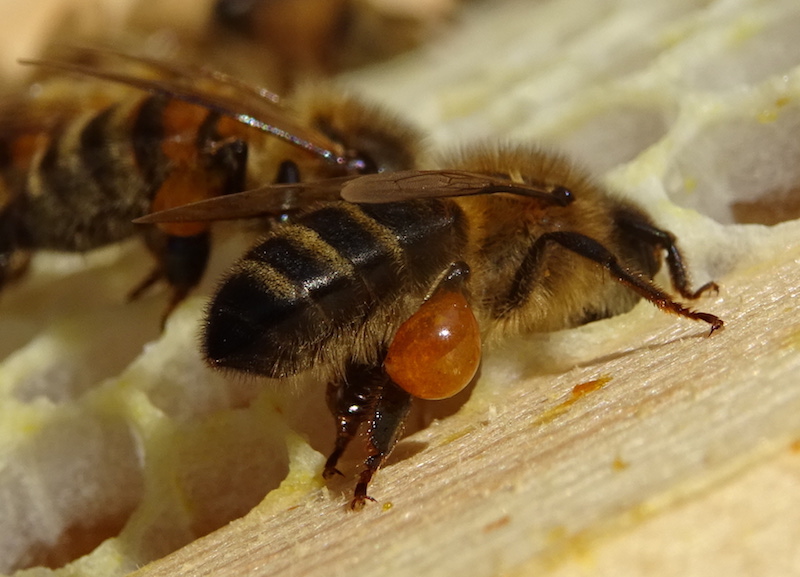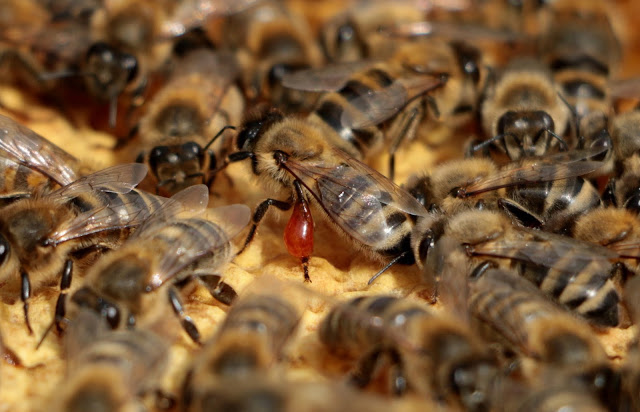In Ancient Greece, they noticed that bees would use a natural resin to close up the entrance of their hives. Hence the term « propolis », which means « before the city ». Nowadays, we harvest propolis for its therapeutic attributes.
Propolis helps protect the hive
Worker bees move resin thanks to their hind legs, just as they do with pollen. Resin is however smaller and has a different color, between pale yellow to green-brownish. As soon at the resin is in the hive it will be used where it is the most needed at that time. For instance it can be used to fill a crack in the hive to prevent the humidity and diseases from coming in, as well as potential ennemies. Bees use a mix of resin and wax to fill such cracks, the hotter the weather the higher the amount of was is needed.
What is propolis?
Propolis is made of different active substances, that vary largely
depending on where your hives are. You will nonetheless find those four
elements wherever you are:
-resin
-balm
-wax
-pollen
Each colony produces between 0.2 to 0.6 lbs of propolis per year and its harvest is a tedious and careful work.
Some component of propolis have therapeutic and medicinal proprieties, used for instance by ear nose and throat specialists, dermatologists and in cosmetic products.
Harvesting propolis
For most beekeepers, propolis is more an inconvenience than anything
else, and merely scratch the top for each frame to remove it. If you
wish the harvest the propolis in your hives you cannot collect what is
on top of your frames, because if it does contain propolis, it is also
made of wax, wood chips and other elements.
To properly harvest propolis you need to use a propolis grid that you
need to put in each hives. The best time of the year to do so is after
the honey harvest, because the propolis will then be new and in
abundance. When the grid full place it in a fridge or freezer, once cold
the propolis will be breakable in small pieces. It will then be usable
and marketable.


